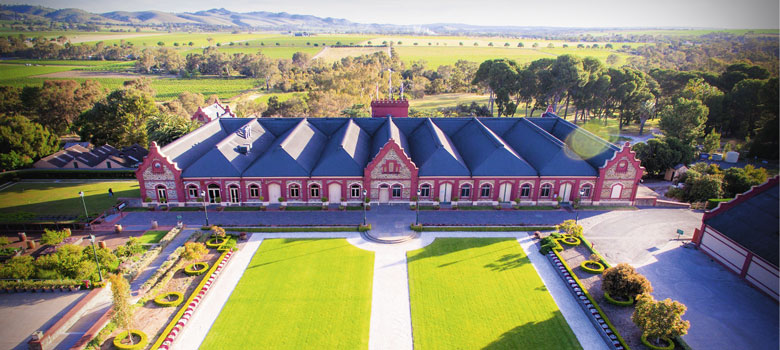
Wine
Château Tanunda: Growing Australia's First Growth
When it comes to wine and history, the five First Growth Châteaux of Bordeaux stand at the pinnacle and represent the highest order of quality, continuity, reputation and success.
As a new world wine nation, Australia’s industry is not so vast. It requires a classification structure, but we do have great history. From this history, we have established our icons as symbols of something special we’re capable of, where we’ve been and where we’re headed. Barossa’s glorious Château Tanunda, built in the 1890s, is one icon that qualifies as a visceral monument to our pioneering spirit, the Barossa and Australia’s wine accomplishments.
Becoming the Barossa
Vines were first planted in 1847 on the sight that is now Château Tanunda and small pockets of ‘Gentlemen Winemakers’ began to emerge as names like Gramp, Sobels, Angas, Smith and Seppelt started to build their reputations. Despite vines flourishing, wine remained a hobby, with most of the Barossa’s 560 growers making their wine in backyards. Then in the 1880s the world began to suffer a shortage and winemakers G.F. Cleland and William Jacob smelt opportunity and began building a grand Château and winery next to where those first vines grew. In 1890, Château Tanunda was born. As the largest building in the Southern Hemisphere, it quickly become an icon and began to put Australia on the world wine map after winning the World’s Best Claret trophy at the 1901 Empire exhibition in London.
Restoration, Rebirth, Ambition

The Château survived two world wars and a depression, but as Australian wine flourished in the 1970s, the Château fell victim to the corporate raidings of Southcorp and was abandoned in the early 1980s. Then in 1998, John Geber came across the abandoned property and fell in love. Having made an offer, he and his wife Evelyne set about restoring the Château, the grounds, the winery, and the vines and rebirthing one of Australia’s great wine icons in the process.
“I saw this unbelievable building,” explains John. “I saw grandeur, I saw history and the Barossa’s first vines and knew we had the ingredients to rival the five recognised First Growth Châteaux in the world.”
Quality = Success
John and his family rebuilt the grand estate and began focussing on the wines and when it comes to wine, the Château has form. It was home to Australia’s first qualified winemaker in Charles Guilly from Switzerland, who made wine at the Château from 1890–1905. After Charles came a veritable ‘Ivy League’ of wine legends like Bill Seppelt, Max Schubert, Grant Burge, Geoff Merrill and Robert O’Callaghan. John recognised that quality was the key to success, employing winemakers like Ralph Fowler, Tim Smith, Stuart Borne and current Chief Winemaker Neville Rowe.
Then in 2010, wine show success started flowing with the Château’s 2008 ‘The Everest’ Grenache winning the World’s Best Grenache trophy at London’s International Wine Spirits Competition (IWSC); the Olympics of the wine world.The Château has since won the Berlin Wine Trophy for Australian Winemaker of the Year eight times, has been nominated four times in Wine Spectator’s top 100 wines of the world, and Neville Rowe has been included as one of only seven Australian winemakers in The Drinks Business’s ‘Top 100 winemakers in the world.’
Fighting for Heritage

In the early 2000's, the EU began banning non-European producers from using any term that related to European wine products and soon ‘Château’ joined words like ‘Champagne’, ‘Port’, ‘Claret’, and ‘Sherry’, which were prevented from being used. In 2009, John appealed to the EU high court and against an army of trade lawyers, he showed that Château Tanunda Brandy was used medicinally at His Majesty the King’s hospital during the first world war.
The appeal was successful with the judge deciding that Château had historical and cultural significance, ruling, therefore, that any product under the name Château Tanunda could trade in Europe. Australia’s first Growth Château Tanunda has now come full circle and is bringing its success back home to build a great new chapter into its history as Australia’s ‘First Growth’ Château. “Between the Château and the Barossa, I believe we have created Australia’s ‘First Growth’ wine estate,” John explains. “We are the birthplace of the first vines in the Barossa, we have the history, we have the recognition, our wines can rival the best of France and Europe and we are recognised as the only Australian company that can call itself, and use the word, Château.”
Celebrating 130 Years with Special Releases
Celebrating their 130th anniversary this year, Chateau Tanunda have released their Grand Barossa Shiraz, Cabernet Sauvignon and GSM in new propriety bottles.
Grand Barossa was born in 1998, with its authenticity, heritage and true sense of place. The label shows the magnificent Chateau that was built in 1890, and is the site of some of the Barossa Valley’s earliest vines as well as its first winery. The brand is in honour of the grand vision the original founders of the winery, the grand building and the renowned Barossa region, who’s name for producing some of the world’s best Shiraz and bold reds is world famous.
Individual parcels are carefully selected from premium vineyards throughout the Barossa and handcrafted individually in small three tonne open fermenters and hand plunged twice daily for seven days.
The wine is gently basket pressed before spending up to 18 months in a combination of new and seasoned French and American oak barrels in their cellars. Blended prior to bottling after rigorous selection of parcels for optimal quality, style and flavour.
The wines are generous plush, complex, lively with a surprisingly juicy finish to complete the package.